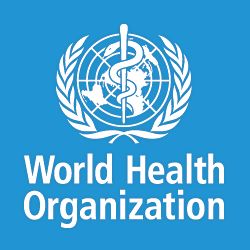
The World Health Organization (WHO) is the directing and coordinating authority for health within the United Nations system.
In March of 2014, the WHO issued a
new report that said:
"In 2012, around 7 million people died - one in eight of total global deaths – as a result of (indoor and outdoor) air pollution exposure. This finding more than doubles previous estimates and confirms that air pollution is now the world’s largest single environmental health risk. Reducing air pollution could save millions of lives.
In particular, the new data reveal a stronger link between both indoor and outdoor air pollution exposure and cardiovascular diseases, such as strokes and ischaemic heart disease, as well as between air pollution and cancer. This is in addition to air pollution’s role in the development of respiratory diseases, including acute respiratory infections and chronic obstructive pulmonary diseases."
From a 2010 report by the WHO:
Guidelines for Indoor Air Quality: Selected Pollutants
Indoor exposure to air pollutants causes very significant damage to health globally — especially in developing countries.
Clean air is a basic requirement of life. The quality of air inside homes, offices, schools, day care centres, public buildings, health care facilities or other private and public buildings where people spend a large part of their life is an essential determinant of healthy life and people’s well-being. Hazardous substances emitted from buildings, construction materials and indoor equipment or due to human activities indoors, such as combustion of fuels for cooking or heating, lead to a broad range of health problems and may even be fatal.
From a 2009 report by the WHO:
Guidelines for Indoor Air Quality--Dampness and Mould
Indoor air pollution – such as from dampness and mould, chemicals and other biological agents – is a major cause of morbidity and mortality worldwide.
The prevalence of indoor dampness varies widely within and among countries, continents and climate zones. It is estimated to affect 10–50% of indoor environments in Australia, Europe, India, Japan and North America. In certain settings, such as river valleys and coastal areas, the conditions of dampness are substantially more severe than the national average.
From a 2011 report by the WHO report:
Environmental Burden of Disease Associated with Inadequate Housing
The 2011 WHO report estimates that unhealthy housing in England represents 22% of the 22 million dwellings at a cost of £17.6 billion. About 12% of new childhood asthma in Europe is attributed to indoor mould exposure.
The findings confirm that housing is a significant public health issue and that policy-makers need to address it as a priority. Furthermore, they show the potential for primary prevention of a wide range of diseases and injuries through the improvement of housing conditions. However, public health workers cannot tackle the challenge alone. Healthy housing is a multisectoral responsibility, achievable only if all relevant players contribute to it, including not only public health, but also housing, engineering and construction, environment, social welfare, urban planning, and building management. The combination of actions from all these sectors shows the complexity of the subject as well as its great potential to increase the health status of our populations through providing adequate, safe and healthy homes.
From a 2016 report by the WHO:
This is an update from their 2006 paper on the same topic. The report focuses only on a few select environmental risks (i.e., climate change, fossil fuel consumption, safe water and sanitation).
The report includes the following statistics for deaths attributable to the environment:
- 26% of all deaths in children under age five
- 24-26% of all deaths in adults age 50 to 75 (which includes the risk of falls)
- 23% of total deaths worldwide
From a 1999 Bulletin of the World Health Organization:
Toxic Effects of Mycotoxins in Humans (1999)
Exposure to mycotoxins is mostly by ingestion, but also occurs by the dermal and inhalation routes.
Mycotoxicoses often remain unrecognized by medical professionals, except when large numbers of people are involved.
Aflatoxins are acutely toxic, immunosuppressive, mutagenic, teratogenic and carcinogenic compounds.
From a 2006 report by the WHO:
Preventing disease through healthy environments: Towards an estimate of the environmental burden of disease
The evidence shows that environmental risk factors play a role in more than 80% of the diseases regularly reported by the World Health Organization. Globally, nearly one quarter of all deaths and of the total disease burden can be attributed to the environment. In children, however, environmental risk factors can account for slightly more than one-third of the disease burden.
An estimated 42% of chronic obstructive pulmonary disease (COPD), a gradual loss of lung function, is attributable to environmental risk factors such as occupational exposures to dust and chemicals, as well as indoor air pollution from household solid fuel use. Other forms of indoor and outdoor air pollution – ranging from transport to second-hand tobacco smoke – also play a role.
This report was updated in 2016 (see above).
From a 1982 report by the WHO:
Indoor Air Pollutants: Exposure and Health Effects
With the growing recognition that air pollutant concentrations often vary considerably according to location and time, and that people often spend 80-90% of the whole day within enclosed spaces, it is necessary to determine the total exposure of individuals and populations to different air pollutants in order to assess the adverse health effects associated with them.